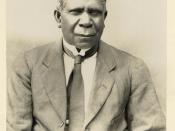As the establishments of our fledgling federation initiated at the launch of the 20th century, the inhabitants in Australia lived and worked in a society that the government interfered little in, known as the "laissez-faire" policy. This also meant that individuals were left to look after themselves, as they had no protection from the government as we do now, for example Medicare and insurance. Life in the early years of federation was quite different in comparison to our own community now more than a hundred years later. At the time it was the era of massive changes in technology and improvements in quality of life and health but there were still many lives of the poorer members of society that were left unchanged. Luxury was certainly one of the many absent desires of the working class people.
For most Australian workers, the poor conditions did not change at the turn of the century as the employers merely ignored many of the reforms that were introduced by colonial governments.
Because it was usually the men who brought home the general income, unemployment was an immediate danger for the family and thus most workers refused to give evidence against their bosses for fear of being sacked.
In the cities, a large percentage of people worked in factories. Despite progressively strong factory laws, the appalling conditions continued. Most factories were half-converted warehouses that were roofed with unlined galvanized iron and so consequently in summer, the temperatures inside were so hot that it reached over 45ðC. The usual employee worked about 10 hours a day and sometimes had to work overtime without extra pay. If they refused to do the extra work, they were sacked.
Most factory jobs did not pay more than 16 shillings a week to women. In a textile industry,


